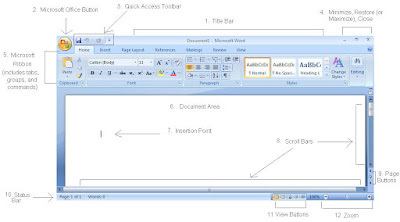 (Portions taken from"Optimize Windows Vista for better performance", http://windows.microsoft.com/en-US/windows-vista/Optimize-Windows-Vista-for-better-performance)
(Portions taken from"Optimize Windows Vista for better performance", http://windows.microsoft.com/en-US/windows-vista/Optimize-Windows-Vista-for-better-performance)No matter how fast computers might be when they are new, they all seem to get slower over time. That speedy PC that you bought last year might not feel like it's running so fast anymore after you install a dozen programs, load it with antispyware and antivirus tools, and download untold amounts of junk from the Internet. The slowdown might happen so gradually you hardly notice it, until one day you’re trying to open a program and wonder, "What happened to my poor PC?" Whatever the cause, there are a lot of ways to help speed up Windows and make your PC work better. Here are some tips to help you optimize Windows for faster performance:
- Delete programs you never use
- Limit how many programs load at startup
- Defragment your hard drive
- Clean up your hard disk
- Run fewer programs at the same time
- Turn off visual effects
- Try restarting if there's a problem
- Add more memory
- Check for viruses and spyware
- Check your computer’s speed
- Check for updates from the manufacturer
- Don’t settle for slow
Delete programs you never use
Many PC manufacturers pack their new computers with programs you didn’t order and might not want. These often include trial editions of programs that companies hope you will try, find useful, and then pay to upgrade to full versions. If you decide you don’t want them, keeping the software on your computer might slow it down by using precious memory, disk space, and processing power.
It’s a good idea to uninstall all the programs you don’t plan to use. This should include both manufacturer-installed software and software you installed yourself but don’t want anymore—especially utility programs designed to help manage and tune your computer’s hardware and software. Utility programs such as virus scanners, disk cleaners, and backup tools often run automatically at startup, quietly running in the background where you can’t see them. Many people have no idea they are even running. (if you have many icons down by the clock in the lower right corner of your screen then you may want to read further)
Even if your PC is older, it might contain manufacturer-installed programs that you never noticed or have since forgotten about. It’s never too late to remove these and get rid of the clutter and wasted system resources. Maybe you thought you might use the software someday, but never did. Uninstall it and see if your PC runs faster.
You can uninstall a program from your computer if you no longer use it or if you want to free up space on your hard disk. You can use Programs and Features to uninstall programs or to change the program's configuration by adding or removing certain options. NOTE: Once you uninstall a program it is permanently removed. You must have the original CD to re-install.
- Open Programs and Features by clicking the Start button , clicking Control Panel, clicking Programs, and then clicking Programs and Features.
- Select a program, and then click Uninstall.
Limit how many programs load at startup
Many programs are designed to load automatically when Windows starts. Software manufacturers often set their programs to open in the background, where you can’t see them running, so they’ll open right away when you click their icons. That's helpful for programs you use a lot, but for programs you rarely or never use, this wastes precious memory and slows down the time it takes Windows to finish loading.
Decide for yourself if you want a program to load at startup.
But how can you tell what programs load automatically at startup? Sometimes this is obvious, because the program will add an icon to the notification area on the taskbar (the bottom right corner near the clock), where you can see it running.
 Look there and see if there are any programs running that you don’t want to load automatically. Position your mouse over each icon to see the program name. Be sure to click the Show hidden icons button so you don’t miss any icons.
Look there and see if there are any programs running that you don’t want to load automatically. Position your mouse over each icon to see the program name. Be sure to click the Show hidden icons button so you don’t miss any icons.



